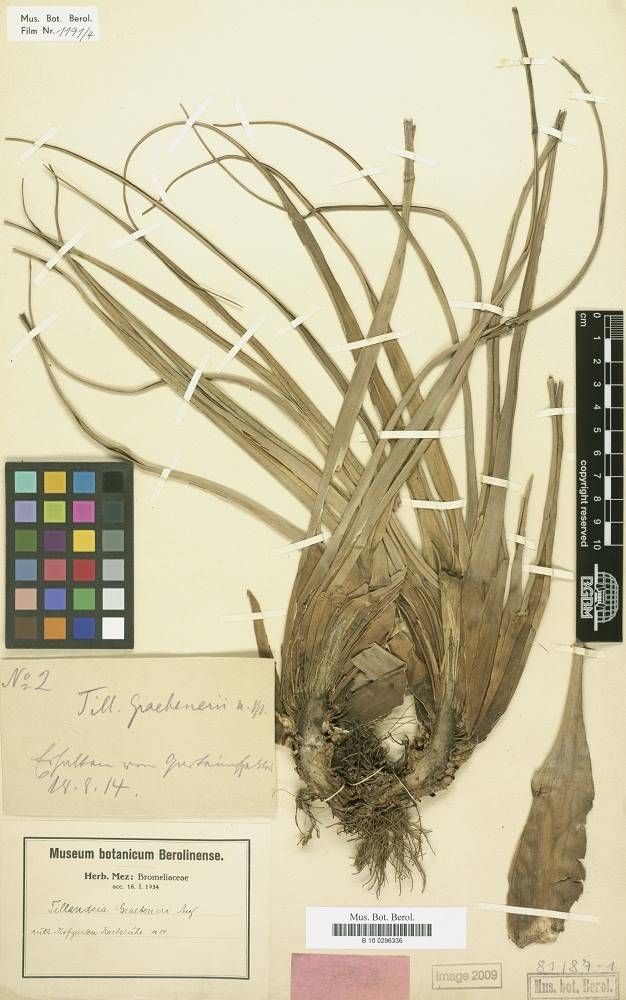Chris Larson 12/20 ... "I have just noticed that T. graebeneri is considered a species. I also noticed that it is on Derek's DVD with no photos.
This came about as I noticed it on Facebook Tillandsia group.
This post includes a photo of Andrew Flower's and my mind was ticking over. Was this species at one time considered synonymous with T. variabilis .... or .....???
P.S. I'm glad I have my label marked T. variabilis (ex-graebeneri). I also sent some seed to Bob Hudson recently with this on the label."
Dale Dixon ... "Itís been on the BSI accepted species list for a while. Iíve only had it in my collection as Tillandsia graebneri. My plants came from Bob Hudson about 9 years ago Iíd say."
Andrew Flower ... "If the picture was my (copyrighted!) 2012 photo it would be of a plant grown from seed labelled "Tillandsia graebeneri G00-738" that I received from Eric in 2002. (spelling note: I sometimes have difficulty reading Eric's handwriting). I assumed it was T. variabilis."
Peter Tristram ... "As Andrew Flower says, plants (and seed!) under this name were once available, though, once some bloomed, they didnít match the description. I remember discussing this with Harry Luther (Ď80s?) and it was decided they were a form of T. variabilis. T. graebeneri is a very different species and likely hard to grow."
Bob Hudson ... "I have been growing this Tillandsia from seed for about 30 yrs. I still refer it to T. variabilis. It is a great little plant."
 Herbarium specimen.
Herbarium specimen.
Tillandsia graebeneri Mez, Repert. Sp. Nov. 14: 253. 1916.
Desc from S&D p1011
Plant barely 4 dm high.
Leaves very numerous in a dense infundibuliform rosette; sheaths broadly ovate, brown;
Blades linear, attenuate, arched-spreading, 4 dm long, 12 mm wide at the middle, strongly channeled, dark green, subglabrous above, densely and minutely appressed-canescent-lepidote below.
Scape erect, stout, much shorter than the leaves, glabrous;
Scape-bracts erect or the upper ones suberect, much exceeding the internodes, bearing elongate decurved blades, glabrous.
Inflorescence laxly compound with simple branches, not at all strobilate, much shorter than the leaves, 16 cm long;
Primary bracts like the scape-bracts, suberect with spreading or decurved blades, much exceeding the axillary spikes and forming a tube about them and their flowers at anthesis;
Spikes 1- or 2-flowered with a sterile rudiment at the apex, 15 mm long, dense, glabrous;
rhachis excavated.
Floral bracts strict, 13 mm long, subcarinate, subcoriaceous, green tinged with red;
Flowers sessile, erect, 55 mm long.
Sepals obtuse, 14 mm long, submembranaceous, green, the posterior ones connate for nearly half their length;
Petals tubular-erect, bright violet;
Stamens and pistil exserted.
Type. Purpus in Karlsruh Hortus 2 (B, B photo 1191/4), without exact locality, Mexico. DISTRIBUTION. Known from the type collection only.
Note: The type specimen is in very poor condition Harry Luther 1995 is of the opinion that plants identified as this are probably T. variabilis.